What Herbs Can Be Planted Together? Best Combinations To Try
We all know the benefits of vegetable companion planting, but what herbs can be planted together? Find out which tasty pairings grow better planted next to each other.

Amy Draiss
We all know the benefits of vegetable companion planting, but what about growing herbs as companion plants? Creating a companion herb garden is no different and allows you to take advantage of their beneficial relationships with other plants.
Reasons for Companion Planting an Herb Garden
Companion planting with herbs offers numerous benefits. For example, companion planting with herbs can discourage pests, which often occurs when you plant companion herbs that exude an aroma that pests find unpleasant. On the other hand, some herbs that grow well together can actually attract beneficial insects or draw unwanted pests away from more susceptible herbs.
Some herbs can even increase the essential oils in companion herbs. However, some herbs that don’t grow well together can draw nutrients and moisture from their companion plants. When choosing companion plants for your herb garden, consider these factors:
Heavy feeders planted next to each other will compete for nutrients in the soil.
Strong smelling/tasting plants planted next to one another may change the flavors and scents of other herbs or vegetables.
Best Herbs to Plant Together
Interested in growing herbs as companion plants? This herb companion planting list will get you started.
Basil
Benefits - Improves the flavor of neighboring herbs. Repels flies and mosquitoes.
Gardening tips, videos, info and more delivered right to your inbox!
Sign up for the Gardening Know How newsletter today and receive a free copy of our e-book "How to Grow Delicious Tomatoes".
Companions - Tomatoes, peppers, asparagus, oregano (Not sage or common rue)
Chamomile
Benefits - Improves the flavor of any neighboring herb. Attracts beneficial insects and pollinators.
Companions - Cabbage, onion, cucumber
Garlic
Benefits - Repels aphids, loopers, snails, Japanese beetles.
Companions - Most plants
Mint
Benefits - Repels aphids, mosquitoes, ants, attracts bees.
Companions - Tomatoes, most plants (avoid combining mint varieties)
Chives
Benefits - Repels aphids.
Companions - Carrots, tomatoes, dill and most herbs
Tarragon
Benefits - Improves flavor of any neighbor.
Companions - Great companion to eggplant
Cilantro
Benefits - Deters spider mites, aphids.
Companions - Spinach, caraway, anise, dill
Sage
Benefits - Repels some beetles and flies.
Companions - Rosemary (not Rue)
Dill
Benefits - Discourages spider mites, aphids.
Companions - Onions, corn, lettuce, cucumbers, (not carrots, tomatoes, fennel, lavender, or caraway)
Rosemary
Benefits - Deters a variety of pests.
Companions - Beans, peppers, broccoli, cabbage, sage (Not carrots or pumpkins)
Catnip
Benefits - Repels harmful pests, attracts bees.
Companions - Pumpkins, beets, squash, hyssop
Lavender
Benefits - Repels harmful pests, attracts butterflies.
Companions - Cauliflower
Note: Keep in mind that some herbs just don’t grow well together. For example, fennel doesn’t get along with most other plants and is best planted in an area all by itself, mostly because of the strong aroma. However, from its solitary location, fennel repels fleas and aphids and attracts beneficial pollinators.

A Credentialed Garden Writer, Mary H. Dyer was with Gardening Know How in the very beginning, publishing articles as early as 2007.
- Amy DraissDigital Community Manager
-
 Best Tomatoes For Containers: 10 Tastiest Varieties For Plentiful Produce In Compact Areas
Best Tomatoes For Containers: 10 Tastiest Varieties For Plentiful Produce In Compact AreasThese are the best tomatoes for containers that prove you don't need to have a large space or elaborate garden to grow delicious produce.
By Bonnie L. Grant
-
 Ultimate Potted Flowers For Spring: 8 Brilliant Blooming Options for Spring Containers
Ultimate Potted Flowers For Spring: 8 Brilliant Blooming Options for Spring ContainersCelebrate the most uplifting of seasons with the most dazzling container flowers imaginable. Here, we present some of the loveliest potted flowers for spring…
By Tonya Barnett
-
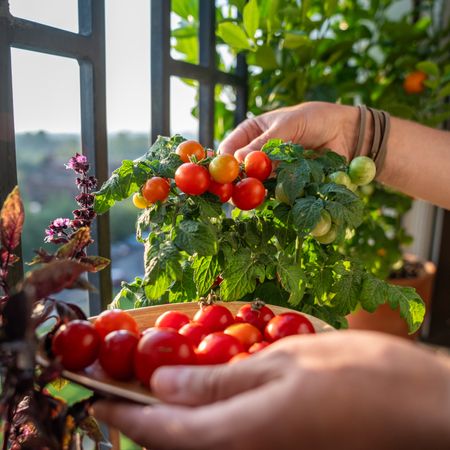 Best Tomatoes For Containers: 10 Tastiest Varieties For Plentiful Produce In Compact Areas
Best Tomatoes For Containers: 10 Tastiest Varieties For Plentiful Produce In Compact AreasThese are the best tomatoes for containers that prove you don't need to have a large space or elaborate garden to grow delicious produce.
By Bonnie L. Grant
-
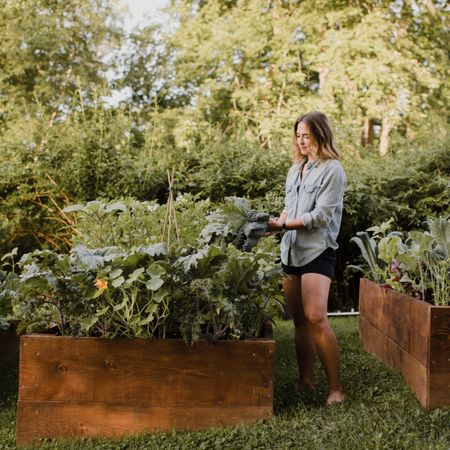 Raised Bed Garden Layout Ideas To Maximize Your Vegetable Harvest
Raised Bed Garden Layout Ideas To Maximize Your Vegetable HarvestCurious how to maximize your vegetable garden this year? Try these raised bed layout ideas and tips to get the most out of your space.
By Teo Spengler
-
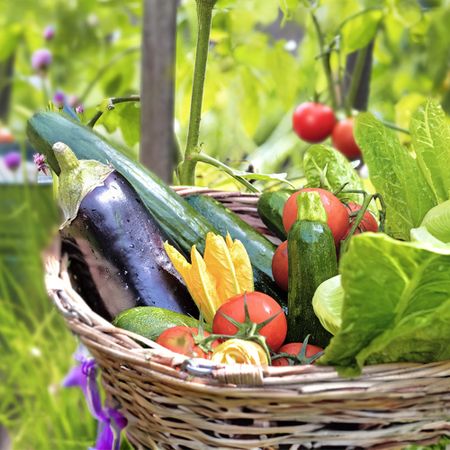 7 Best Vegetables To Plant In February – And Start Harvesting From Early Spring
7 Best Vegetables To Plant In February – And Start Harvesting From Early SpringGet a head start on your garden with these delicious veggies. Plant now and you can begin enjoying home-grown harvests sooner than you think.
By Mary Ellen Ellis
-
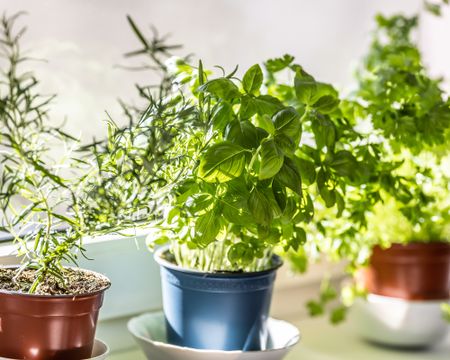 How To Grow A Windowsill Full Of Veggies This Winter, According To A Top Gardening Expert
How To Grow A Windowsill Full Of Veggies This Winter, According To A Top Gardening ExpertAward-winning journalist and climate-resilient gardening expert Kim Stoddart reveals her top plant picks and tips for a productive winter windowsill garden.
By Kim Stoddart
-
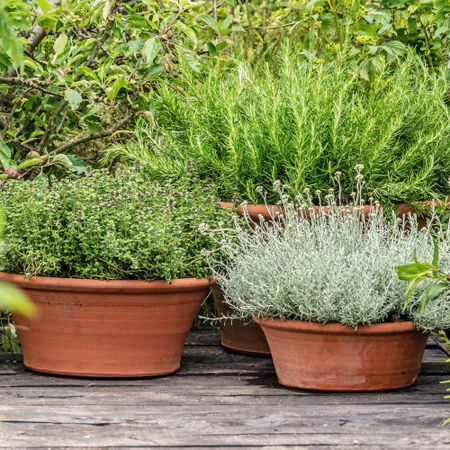 7 Perennial Herbs Perfect For Pots – Enjoy Aromatic Patio Harvests Year After Year
7 Perennial Herbs Perfect For Pots – Enjoy Aromatic Patio Harvests Year After YearDiscover the best perennial herbs to grow in pots. Ideal for small spaces, these low-maintenance plants offer year-round flavor and greenery on your patio.
By Bonnie L. Grant
-
 Grow Tasty Herbs For Roast Turkey In Your Garden
Grow Tasty Herbs For Roast Turkey In Your GardenCan you season your turkey with herbs you grow in your own garden? Yes! Click to learn more.
By Amy Grant
-
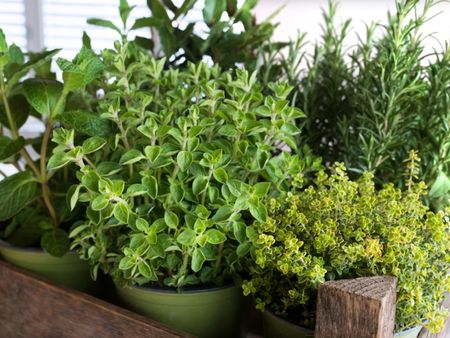 10 Easy Herbs For Beginners
10 Easy Herbs For BeginnersIf you’re new to herb growing, there are some perfect beginner herbs that are low maintenance and easy. Here are our top ten.
By Mary Ellen Ellis
-
 How To Make A Rain Gutter Herb Garden
How To Make A Rain Gutter Herb GardenOne really fun look outside the box is a hanging rain gutter herb garden. A gutter planter is a unique way to house and showcase plants.
By Bonnie L. Grant